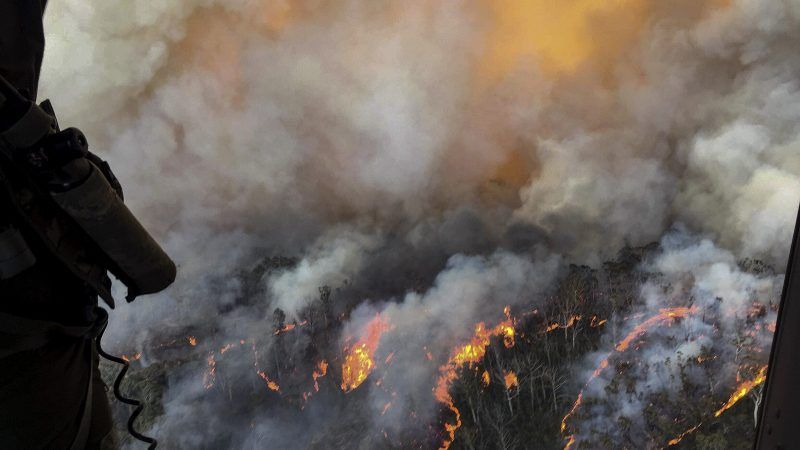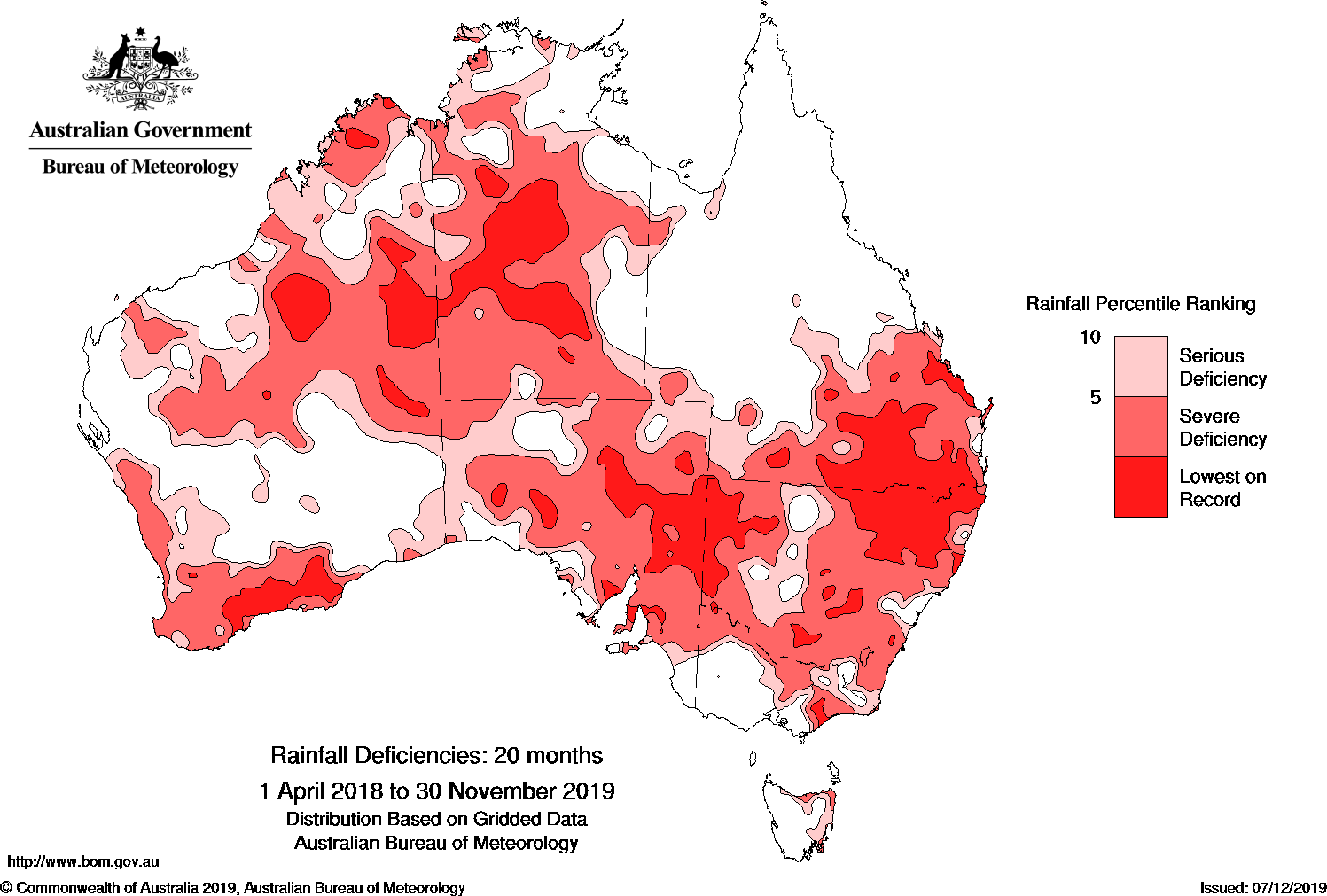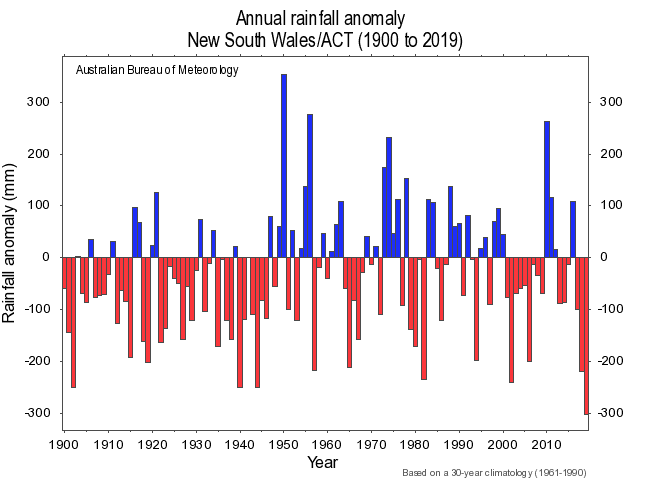Is Climate Change Making Australia's Bushfires Worse?
Maybe. Here's the evidence we have so far.

"Australia is committing climate suicide," declares the headline of a New York Times op-ed. An op-ed in The Washington Post similarly admonishes, "Australia's apocalyptic fires are a warning to the world." Apocalyptic as a descriptor is not far off for the folks experiencing the fires in southeastern Australia that have burned 15.6 million acres (an area about the size of West Virginia) and killed 24 people so far.
"Australia is a fire continent," states Arizona State University environmental historian Stephen Pyne in his (2015) book World Fire: The Culture of Fire on Earth. A 2009 report to the Australian Senate confirmed Pyne's moniker when it noted that "about 50 million hectares [123 million acres] of land are burned across Australia each year on average and about 80% of fire-affected areas are in northern savanna regions."
In any case, is man-made climate change a significant contributor to the current conflagration?
Certainly, the last year in Australia has been one of the hottest and driest on record.
Australia's weather patterns are driven in part by the Indian Ocean Dipole—a phenomenon in which hotter and cooler water sloshes back and forth between the east coast of Africa and the western islands of Indonesia. During its positive phase warmer water near east Africa produces lots of rain there while cooler water near Indonesia dries out Australia. In the past year or so, the IOD has been in an unusually strong positive phase, reaching record values for at least the past 60 to 80 years. The result has been widespread drought Down Under.

November rainfall was the lowest on record for Australia, according to the country's Bureau of Meteorology. The southeastern state of New South Wales experienced record low rainfall in 2019.

Is climate change contributing to the current outbreak of fires? A September 2019 article by two Australian researchers in the journal PLoS One notes that the trend in the McArthur Forest Fire Danger Index has been rising since 1973. The index assesses dryness, based on rainfall and evaporation, along with temperature, humidity, and wind speed. After taking into consideration the effects of various global weather oscillations, the researchers propose that "anthropogenic climate change is the primary driver of the trend, through both higher mean temperatures and potentially through associated shifts in large-scale rainfall patterns." They specifically note that rise in the fire danger index is strongest in southeastern Australia, and that is exactly where the fires have been worst this year.
Of course, fires need fuel. Landscape management for fire prevention, specifically using prescribed burning to reduce fuel loads in the Australian bush, is controversial. In the wake of devastating fires in 2009, a royal commission issued a report that recommended raising the target of burning across all public lands from 1.7 to 5 percent annually in the southeastern state of Victoria where massive fires are currently burning. The state never met that goal. The current outbreak has torched around 3 million acres in that state so far.
As Wired observes there is an ongoing "tension in Australia between pro-fire foresters and urban environmentalists who lamented the destructive potential of fire, for wildlife in particular." Sadly, University of Sydney environmental scientist Chris Dickman estimates that at least 480 million animals have been killed by the fires.
The fire disaster has predictably been used by climate activists to cudgel Australian politicians, including Prime Minister Scott Morrison, who oppose deep cuts in their country's greenhouse gas emissions. (And it certainly didn't help that Morrison went on vacation to Hawaii as the fire emergency intensified.) But as the politicians correctly point out, man-made global warming is a global commons problem. Australia's greenhouse gas emissions amount to only about 1.3 percent of the annual global total, so cutting all of them would have essentially no impact on warming trends. On the other hand, as politicians like Morrison observe, the economic impacts of steep immediate emissions cuts would not be negligible.
The good news is that some rain has now fallen in southeastern Australia as the IOD has shifted into its neutral phase. However, Australian authorities expect only a brief reprieve from the recent rains and cooler temperatures.
As the world likely continues to warm over the course of this century, it is clear that Australians will need to be more vigorously proactive in managing their wild landscapes to ameliorate future fire risks.


Show Comments (171)